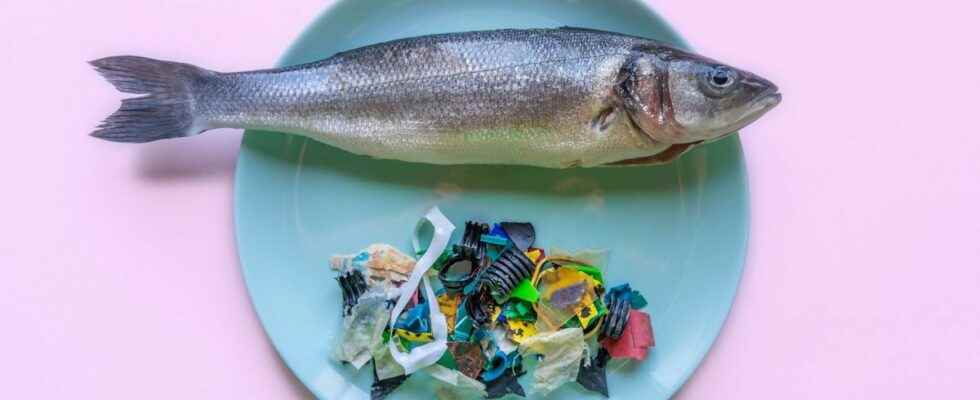Published on
Updated
Reading 3 mins.
From seabed to mountain peaks, microplastics are everywhere in the environment. But not only: they also make their way into the human body.
Floating bottles, a turtle suffocated by a bag, piles of waste in the middle of the Pacific… For years, the images of the pollution of the oceans by the hundreds of millions of tons of plastic produced each year have been difficult to ignore. But their degradation into smaller and smaller particles which pollute the water and the air in quantity has been proven more recently.
From lungs to placenta, microplastics are everywhere
“We never imagined ten years ago that there could be so many small microplastics invisible to the naked eye and that they were everywhere around us”comments Jean-François Ghiglione, researcher at the Laboratory of Microbial Oceanology in Banyuls-sur-mer in France. “We could not yet consider finding them in the human body”. This is now done, with a proliferation of scientific studies showing the presence of these microplastics in certain human organs.
Like the lungs. Not so surprising that we breathe these particles present in the air, in particular microfibers from synthetic clothing. “NOTWe were surprised to find microplastics so deep in the lungs”, Laura Sadofsky, of the Hull York School of Medicine in the United Kingdom, told AFP. His team notably identified polypropylene and PET (polyethylene terephthalate) in these fabrics.
In March, another study reported, for the first time, traces of PET in the blood. Given the small sample of volunteers, some scientists call for caution on the conclusions to be drawn, but this presence raises questions about the ability of the blood system to then distribute these particles to all organs.
Without their journey inside the body being known at this stage, microplastics have also been found in other organs: “Lungs, spleen, kidneys, and even the placenta”launches Jean-François Ghiglione.
In 2021, researchers had found microplastics in maternal and fetal placental tissues, expressing their “great concern” for the potential consequences of this foreign presence on the development of the fetus.
A “precautionary principle” to be taken
The action of microplastics on the human body “is potentially a big deal”, estimates Bart Koelmans, of the Dutch university of Wageningen. He evokes the hypothesis that this intrusion of microplastics – which although recently detected is not new – is for example responsible for certain syndromes weakening human organisms. An intrusion that goes through breathing but also through what we eat and drink.
In 2019, a shock report by the NGO WWF estimated that a human being ingests and inhales up to 5 grams of plastic per week, the equivalent of a credit card. Results and a methodology disputed by scientists like Bart Koelmans whose calculations conclude rather at an average of one grain of salt per week.
“Over a lifetime, a grain of salt a week is already something”, he comments. While health studies on humans have yet to be developed, toxicity in certain animals reinforces concerns.
“Small microplastics invisible to the naked eye have deleterious effects on all the animals we have studied in the marine environment or on land”, assures Jean-François Ghiglione. The fault of the chemical additives they contain (dyes, plasticizers, stabilizers, flame retardants, etc.) “which can have impacts on growth, metabolism, blood sugar, blood pressure, sexuality…”.
So, “there is a precautionary principle to be taken”, insists the researcher. As a consumerr, “we can simply limit the purchase of packaged products”especially plastic bottles, he suggests.
But “people can’t stop breathing”, emphasizes Bart Koelmans. “Even if you change your eating habits, you will inhale them: they are everywhere”.
